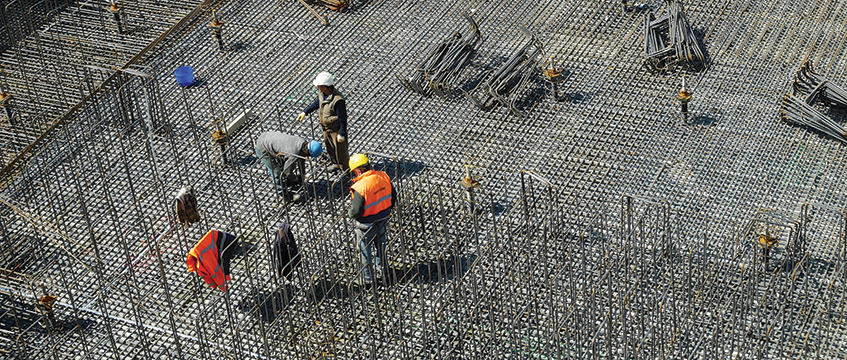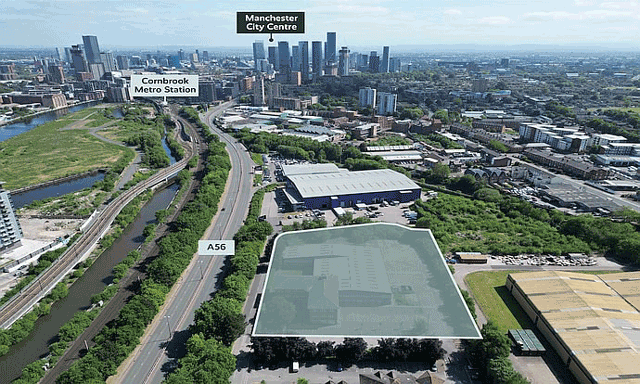The UK construction sector is continuing to spiral downwards, with the decline universal across sectors.
The latest quarterly research from industry expert Glenigan shows that the overall value of work starting on site fell by a quarter in the three months to the end of October compared with the previous three months, finishing 35% lower than 2022 levels.
Performance in the November Construction Index was so poor that not one sector registered an uptick in activity, either against the preceding three months to October or last year’s figures.
Glenigan said the “unusual blend” of ongoing global economic pressures and persistent political uncertainty at home were continuing to dent investor and consumer confidence, stifling short-term recovery. It also highlighted the impact of the recent policy U-turn on HS2 as a “contributing factor to a sudden dip in previously resurgent verticals, particularly civils and residential”.
Allan Wilen, Glenigan’s economic director, said: “The November index will make for disappointing reading as previous editions hinted that green shoots of recovery were starting to poke through. Frustratingly, high interest rates and a weak economy continue to depress the market, reducing the appetite to commence projects until markets stabilise.
“Government departments are also struggling to prioritise capital projects, despite last year’s capital underspends being rolled forward to the current financial year. Many contractors and developers have been left high and dry by the recent decision to can HS2 phase 2. While funds have been allocated to a Northern development programme, the sector is still to see what this will look like and faces the prospect of having to tender for the business all over again. However, the sector has faced tough times before, and we’re confident current headwinds will die down over the next few years.”
Sector analysis
Residential
Residential starts fell significantly during the index period, with starts standing 30% lower on 2022 levels, and down 23% on the preceding three months.
Drilling deeper, private housing decreased by more than a fifth (-22%) against the preceding three months and weakened 25% compared with the previous year. Social housing fared even worse, with performance slashed almost in half (-46%) against 2022 figures, plummeting 30% on the previous three months.
Non-residential
Performance in non-residential verticals was dismal, painting a picture of widespread decline.
Hotel and leisure suffered the sharpest fall, dropping 68% on last year and 57% against the previous three months. Health starts also experienced a poor period, cascading by 43% compared with the preceding three months, and down 34% compared with 2022 levels. Similarly, industrial project starts were 57% lower than last year, falling 32% against the previous three months.
The impact on other verticals was more modest, but still dramatic. While office project starts dipped only 8% against the preceding three months, they finished 39% down when measured against last year’s figures.
Education and community and amenity project starts decreased 28% and 5%, respectively, against the three months to the end of October, standing 21% and 24% lower than the previous year, respectively.
While retail decreased only 3% against the previous three months, it declined 36% against the previous year.
Civils finished 36% down on a year ago, with work starting on site falling back by almost a fifth (-18%) compared with the preceding three months. Infrastructure decreased 15% against the preceding three months and remained 38% down on 2022 levels. Utilities starts declined by 32% against 2022 levels and 22% on the previous three months.
Regional outlook
The West Midlands experienced a particularly poor period, with the value of project starts decreasing 27% against the preceding three months, falling 43% compared with the previous year.
London was also 36% down on 2022 project start levels and 19% lower than the previous three months.
Decline in the South West was less severe (-7%) compared with the previous three months but fell by almost a third (-29%) compared with last year.
The value of project starts in the South East dropped by a quarter (-25%) when measured against the preceding three months and the previous year.
The East Midlands saw project start performance crash (-44%) when considered against 2022 levels, and slashed by a fifth (-22%) compared with the preceding three months.
The North East and East of England both experienced a weak period, decreasing by 31% and 34% respectively, remaining 21% and 31% down on last year.
Northern Ireland and Wales project starts also weakened, slipping by 45% and 21%, respectively, against the preceding three months, and down 52% and 23% compared with a year ago.
Scotland stumbled -2% compared with the previous three-month period, dropping 38% compared with the previous year. Yorkshire and the Humber, and the North West also suffered falls in project starts against both the preceding three months and 2022 levels.
To send feedback, e-mail julia.cahill@eg.co.uk or tweet @EGJuliaC or @EGPropertyNews











